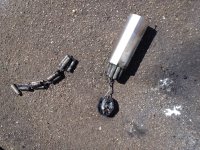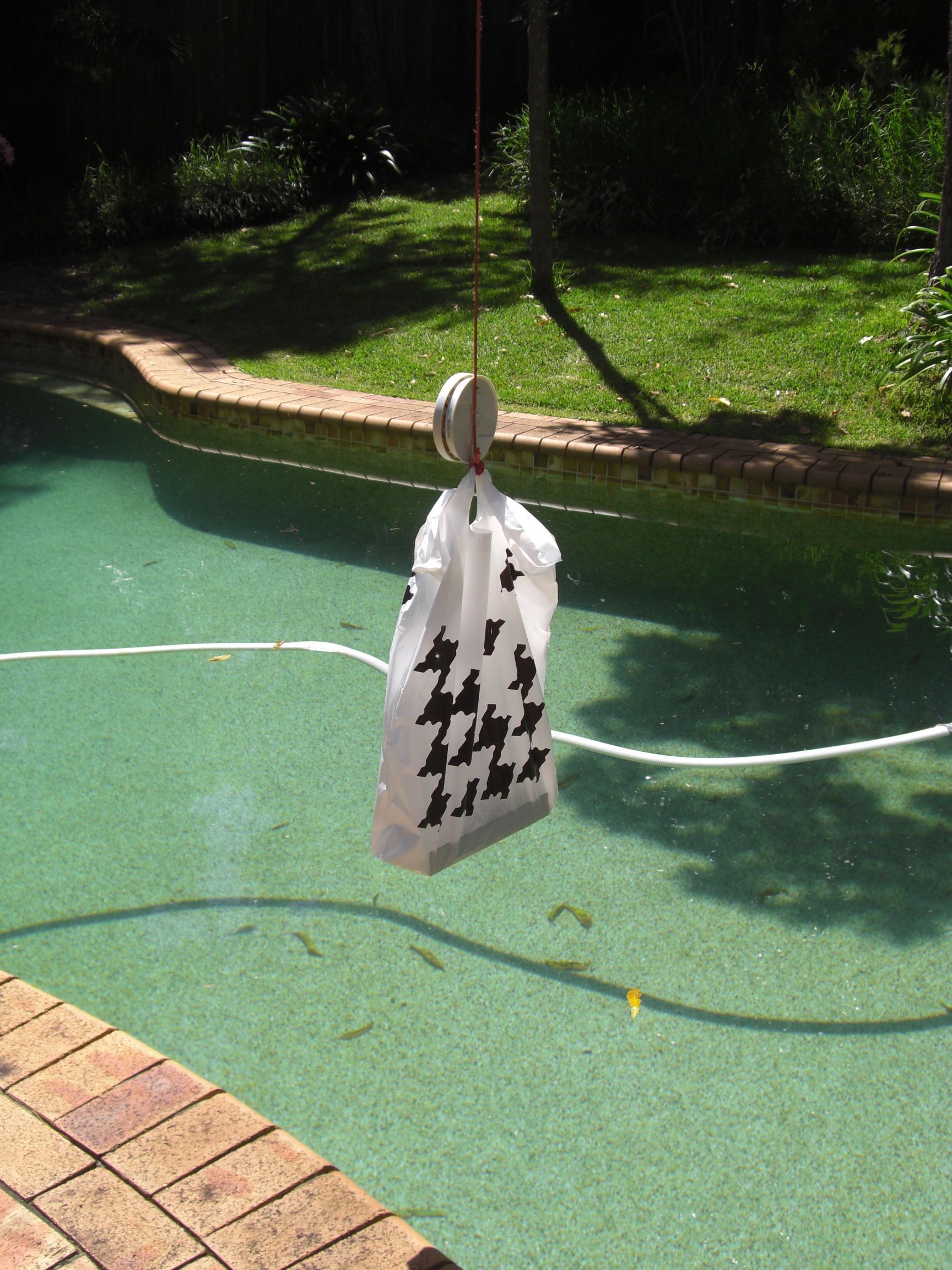Hi, am hoping for advice to ease my mind and reduce any likelihood of suffering to customers or shops who purchase Li-ion batteries (all main chemistries for ebikes) in the event of a combustion like that happened to me this morning. Particularly, what are the best methods to contain or extinguish a fire from a Li-ion ebike battery? For no apparent reason, a lithium ion (36V 12Ah) tube battery I was testing from a little known Chinese supplier came to a smoking and flaming end. The battery had arrived and I'd tested a few from this supplier with no ill effects until the one I set up this morning. It was likely about 80% charged I'm assuming from the others in the small test batch (I had not tried charging it until this point) and as soon as I rigged the system up and flicked the switch there was a loud click and then smoking. Knew things weren't right and so quickly moved it outside just before it became an intensely flaming and smoking little beast. I had a hose and small extinguisher (off a boat) and the two of these controlled it but I'm wondering what the best method I can recommend to others who use these types of batteries would be. I've seen sand, water, salt etc. to be recommended (with water both recommended and not recommended) but am wondering if anyone has some well established protocols to follow or can recommend a brand/type of fire extinguisher suitable for Li-ion battery fires? Dogman - you must have some good experience with this - have seen that very informative video... - some protocols that can be followed by customers and shops alike would be appreciated.
Currently, my thoughts are:
1) Use high quality batteries from reputable suppliers (I typically use Panasonic CGR18650CG cells) but good suppliers won't do custom things so sometimes there is a need to use other untested companies. Definitely can't recommend typical Chinese suppliers after this morning's excitement.
2) Have a bucket of sand or water handy - not sure how much a bucket of sand would have done or if I'd be brave enough to get too close at its peak - I was lucky with a hose nearby but a small amount of water may aggravate the situation perhaps.
3) Charge near a smoke alarm outside or in a well vented and non-combustible area (probably a good idea to include a smoke alarm with each kit) - obviously charging location has to be practical for most people.
4) Have each battery tested by someone competent before handing on to customer - not always practical if selling kits online and they were all tested at the factory (so the story goes).
5) Have a fire extinguisher handy - what type is best?
Any suggestions would be appreciated - am currently wondering if being in the battery business is worthwhile! I highly suggest all ebike users to have a think about this too and be prepared for the un-expected. This is the first of quite a few hundred batteries of mine to spontaneously combust and I got lucky but obviously charging isn't the only time things can go wrong and I'll not be charging next to the bedroom anymore.
Not sure what was the cause and there's not a lot left to do a post-mortem on but as I tested all other components (controller and cables) to be fine I have to assume it was a fault within the BMS or cells themselves. No sign of damage was apparent to the shipping box either. Fuse protected (25A) - that popping may have been the clicking sound perhaps. Any ideas on what can cause a battery to smoke its top upon a simple flicking of the switch - no throttle was used?
Matt

Currently, my thoughts are:
1) Use high quality batteries from reputable suppliers (I typically use Panasonic CGR18650CG cells) but good suppliers won't do custom things so sometimes there is a need to use other untested companies. Definitely can't recommend typical Chinese suppliers after this morning's excitement.
2) Have a bucket of sand or water handy - not sure how much a bucket of sand would have done or if I'd be brave enough to get too close at its peak - I was lucky with a hose nearby but a small amount of water may aggravate the situation perhaps.
3) Charge near a smoke alarm outside or in a well vented and non-combustible area (probably a good idea to include a smoke alarm with each kit) - obviously charging location has to be practical for most people.
4) Have each battery tested by someone competent before handing on to customer - not always practical if selling kits online and they were all tested at the factory (so the story goes).
5) Have a fire extinguisher handy - what type is best?
Any suggestions would be appreciated - am currently wondering if being in the battery business is worthwhile! I highly suggest all ebike users to have a think about this too and be prepared for the un-expected. This is the first of quite a few hundred batteries of mine to spontaneously combust and I got lucky but obviously charging isn't the only time things can go wrong and I'll not be charging next to the bedroom anymore.
Not sure what was the cause and there's not a lot left to do a post-mortem on but as I tested all other components (controller and cables) to be fine I have to assume it was a fault within the BMS or cells themselves. No sign of damage was apparent to the shipping box either. Fuse protected (25A) - that popping may have been the clicking sound perhaps. Any ideas on what can cause a battery to smoke its top upon a simple flicking of the switch - no throttle was used?
Matt





